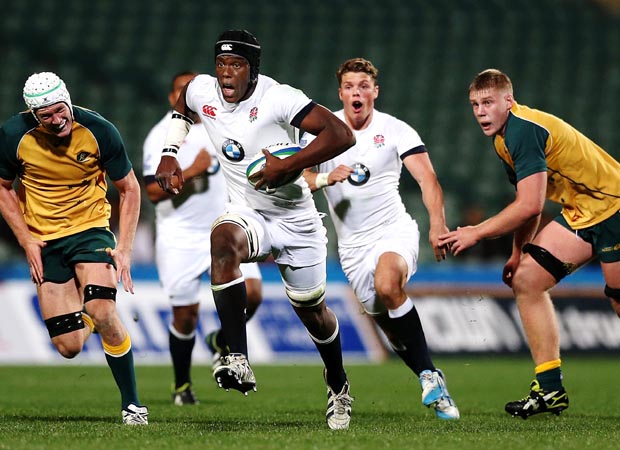 What do Dan Cole, Billy Twelvetrees, Tom Youngs and Owen Farrell of the current England squad have in common? The answer is that they are all beneficiaries of the dual registration scheme gangway between Premiership and Championship clubs which provides invaluable match experience in the Championship for rising stars of the English game.
What do Dan Cole, Billy Twelvetrees, Tom Youngs and Owen Farrell of the current England squad have in common? The answer is that they are all beneficiaries of the dual registration scheme gangway between Premiership and Championship clubs which provides invaluable match experience in the Championship for rising stars of the English game.
That experience was rarely available on a consistent basis at Premiership level before the scheme was introduced in 2007, and it resulted in promising players having their development arrested because they trained for rugby but rarely played it. Instead of honing their playing skills the only expertise they acquired was extracting splinters from their backsides after endless hours spent sat on the bench.
Furthermore, unlike the New Zealanders, Australians and South Africans who always seemed to have talented youngsters able to take the big step up to full Test rugby, by comparison their English counterparts often appeared immature physically and mentally.
Thankfully, that has changed. For instance, the four England regulars named above were beneficiaries of the enlightened attitude taken by the likes of the Bedford chairman, Geoff Irvine, and Nottingham’s Alastair Bow, as well as the foresight of Premiership directors of rugby such as Brendan Venter at Saracens, and Richard Cockerill at Leicester.
All four of them played for Bedford, and Cole and Youngs also had stints with Nottingham.
Bedford have been the most notable dual registration trail-blazers, and derived significant benefits from their partnership with Saracens, especially in 2010-11 when Jackson Wray, George Kruis, Will Fraser, James Short, and, briefly, Owen Farrell, cut their teeth at Goldington Road. That season the Blues finished second in the league, and were British & Irish Cup runners-up.
Last season the system did not work quite as well for the Championship club for a variety of reasons, including Saracens requiring as much strength in depth as possible due to their double-winning aspirations.
 Irvine takes the long view and says that it is swings and roundabouts. With England’s 2014 Junior World Cup winners such as tournament top try-scorer Nathan Earle, lock/back-row and captain Maro Itoje, centre Nick Tompkins, back-rower Hayden Thompson-Stringer and full-back Aaron Morris – who has just joined Saracens from Bedford – available to the Blues this season, you can see why he might adopt a pragmatic outlook.
Irvine takes the long view and says that it is swings and roundabouts. With England’s 2014 Junior World Cup winners such as tournament top try-scorer Nathan Earle, lock/back-row and captain Maro Itoje, centre Nick Tompkins, back-rower Hayden Thompson-Stringer and full-back Aaron Morris – who has just joined Saracens from Bedford – available to the Blues this season, you can see why he might adopt a pragmatic outlook.
However, it would be surprising if Bedford’s potential firepower did not set off alarm bells elsewhere in the second division, especially as Harry Wells, a 2013 England U20 Junior World Championship winning lock/blindside from Leicester is also on their books.
One argument is that those who have invested time and effort in the dual registration system over many years, such as Irvine, should be entitled to reap the benefits, while those who didn’t play catch-up.
Not surprisingly, that is the view Irvine takes: “It is an ad hoc system at the moment but it is welcomed by all parties, whether it’s the RFU, the PGB, the Premiership or the Championship clubs. One of the beauties is that it isn’t over-regulated, although there are two areas which are scrutinised. Firstly, the numbers are carefully regulated in that you can only have up to six imports per match day squad – three of them dual registered, and three on loan – although it is very rare you get more than four in a starting line-up. Secondly, you cannot inflate the strength of your squad after the transfer deadline at the end of February.”
The counterpoint is that at some stage there is bound to be conflict in the second tier pro league over the advantage some clubs – however enlightened – have over their opponents due to the high-calibre quality, and quantity, of young future Premiership stars on their rosters.
My view is that dual registration has got to be thought through more carefully and a better balanced method put in place to manage it. If the aim is to generate an even more competitive league then borrowing from the draft system in American Football is one way forward. This would involve each of the 12 Premiership clubs putting forward five promising players for the draft each season, with the bottom Championship club (i.e promoted from National One) getting first pick and the top club getting 12th pick, then the bottom club 13th and so on until all 60 players are allocated.
This would give the Premiership clubs whose future stars were going to clubs further down the Championship table an incentive to lend coaching and conditioning expertise to ensure that they maximise on their new assets. As for the players, it’s often said that a bit of a adversity builds character – and the benefits of one or two seasons at a battling club before returning to the big time could be just the job.
Furthermore, the recipient club would pay the Championship market rate in salary to the Premiership import, with the Premiership club topping it up to whatever their contract with the player. However, the proviso would be that, other than for exceptional or unforeseen circumstances, the player is registered with the Championship club for the season.
As things stand, because Premiership clubs pay the salaries of dual registered players they feel free to recall them at any time. There’s got to be a better way, and given the benefits that Championship clubs have already provided for the England cause it’s time the RFU discovered it.
*This article was first published in The Rugby Paper on August 17.























